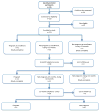Fertility after intrauterine device removal: a pilot study
- PMID: 25751567
- PMCID: PMC4536198
- DOI: 10.3109/13625187.2015.1010639
Fertility after intrauterine device removal: a pilot study
Abstract
Background: Despite high efficacy, only 7.7% of women in the United States currently using contraception use an IUD. There is little published contemporary data about fertility rates after IUD use, especially in nulliparous women and women using the hormonal IUD.
Study design: We recruited sexually active women 18 to 35 years of age enrolled in the Contraceptive CHOICE Project who had discontinued a contraceptive method and desired pregnancy.
Results: In this pilot project, we enrolled 69 former IUD users (19 copper and 50 levonorgestrel) and 42 former non-IUD users. Pregnancy rates at 12 months were similar between the two groups; 81% of IUD users became pregnant compared to 70% of non-IUD users (p = 0.18). In the Cox model, there was no difference in the time to pregnancy in IUD users compared to non-IUD users (HRadj 1.19, 95% CI 0.74-1.92). African American race was the only variable associated with reduced fertility (HRadj 0.40, 95% CI 0.24-0.67).
Conclusions: We found no difference in 12-month pregnancy rates or time to pregnancy between former IUD users and users of other contraceptive methods. However, there was a clinically and statistically significant reduction in fertility in African American women.
Keywords: Contraception; Fertility; Intrauterine device; Race.
Figures
References
-
- Sonfield A. Popularity Disparity: Attitudes about the IUD in Europe and the United States. Guttmacher Policy Rev. 2007;10:19–24.
-
- Daling JR, et al. Primary tubal infertility in relation to the use of an intrauterine device. N Engl J Med. 1985;312(15):937–41. - PubMed
-
- Cramer DW, et al. Tubal infertility and the intrauterine device. N Engl J Med. 1985;312(15):941–7. - PubMed
Publication types
MeSH terms
Grants and funding
LinkOut - more resources
Full Text Sources
Other Literature Sources
Medical


